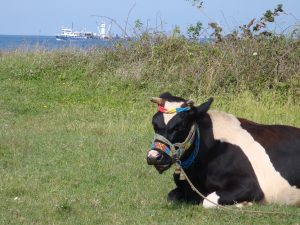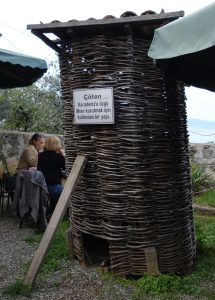The Black Sea – an overview
Old name: Pontos Axinos (Inhospitable Sea), Pontos Euxinos (Hospitable Sea)
Turkey’s Black Sea (Karadeniz) coast stretches all the way from the Thracian-Bulgarian border to the Georgian border at Sarp. Far fewer foreign tourists visit the Black Sea than the Aegean and Mediterranean mainly because its unpredictable climate makes rain an ever-present threat even in summer. The eastern end of the coast is also unpleasantly humid in summer. 
But that same rain guarantees that this is one of the greenest parts of Turkey with thick forests still a feature of the inland valleys despite the concrete development that disfigures much of the coast itself. That greenery makes the coast particularly popular with visitors from the Gulf States.
Small beaches dot the seaside with decent resorts at Amasra and Sinop, and even some sand around the sizeable port town of Samsun. There are also small beach resorts within reach of İstanbul at Kilyos, Şile and Ağva.
Beyond Samsun, Ünye, Ordu and Giresun repay brief stops, but the real drawcard of the eastern end of the coast is vibrant Trabzon, with the reconstructed cliff-face monastery of Sumela as its primary attraction.
After Trabzon the Kaçkar Mountains offer excellent summer trekking possibilities out of Ayder and Barhal. The Fırtına Vadisi leading to Çamlıhemşin seems to be taking over from Yusufeli as a white-water rafting destination.
Centre of the flourishing tea industry, Rize is the last Black Sea town of real interest to visitors.
While here make sure to sample some of the famous local cuisine of the eastern Black Sea, especially the myriad hamsi (anchovy) dishes available in winter or the muhlama (cheese fondu) and misr ekmeği (corn bread) to be found at any time. Look out, too, for women dressed in colourful local costume in the Laz towns around Rize (Pazar, Ardeşen, Fındıklı, Arhavi and Hopa) and the Hemşin country around Ayder. You may even hear Laz being spoken along this part of the coast.
Although the coastal towns are almost all depressingly ugly, at the eastern end of the Black Sea (give Hopa a swerve if you can) a new vernacular architecture is now being developed. It involves mixing and matching wooden brick panelling with half-timbering, and many local authority buildings are being retro-fitted with the new look. You can see it in Rize in the Teaching Hospital of the Recep Tayyıp Erdoğan University and in the Adalet Sarayı (Palace of Justice) in Ardeşen.
Both İnebolu and Samsun played important roles in the events of the Turkish War of Independence and do a lot to publicise that fact.
Note that Turks regard Safranbolu and Kastamonu as Black Sea towns; most foreign visitors probably think of them as Central Anatolian.
If you can find it, Black Sea: A Traveller’s Handbook for Northern Turkey makes a good guide to the region.
Getting there
For those on tight timetables, airports at Sinop, Samsun and Trabzon serve the Black Sea coast. The Black Sea Highway pushes purposefully eastwards from Sinop to the Georgian border, but traffic still makes slow progress along the western reaches of the coast; to get from İstanbul to Amasra by bus involves many changes, and frequent diversions inland.



